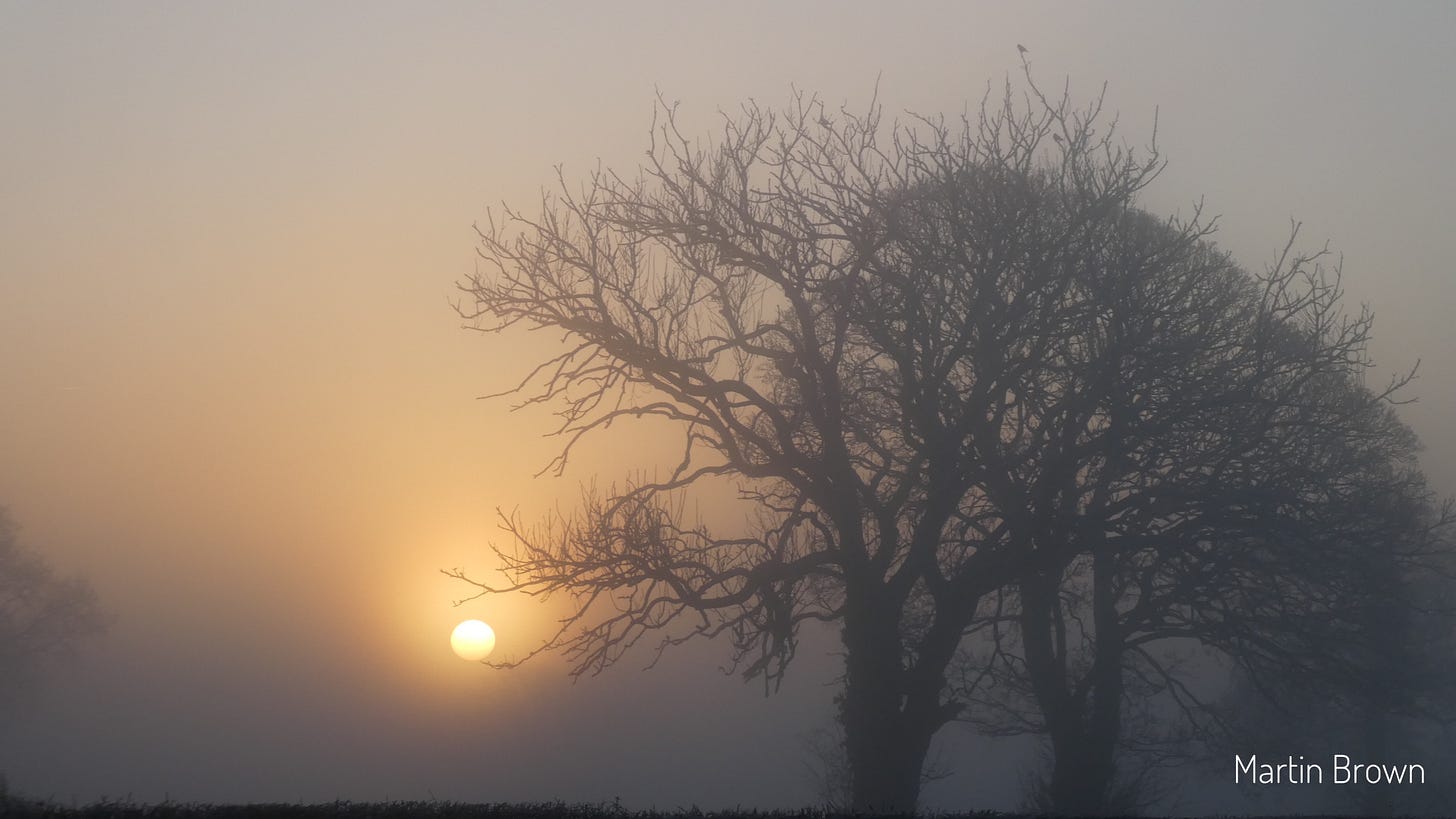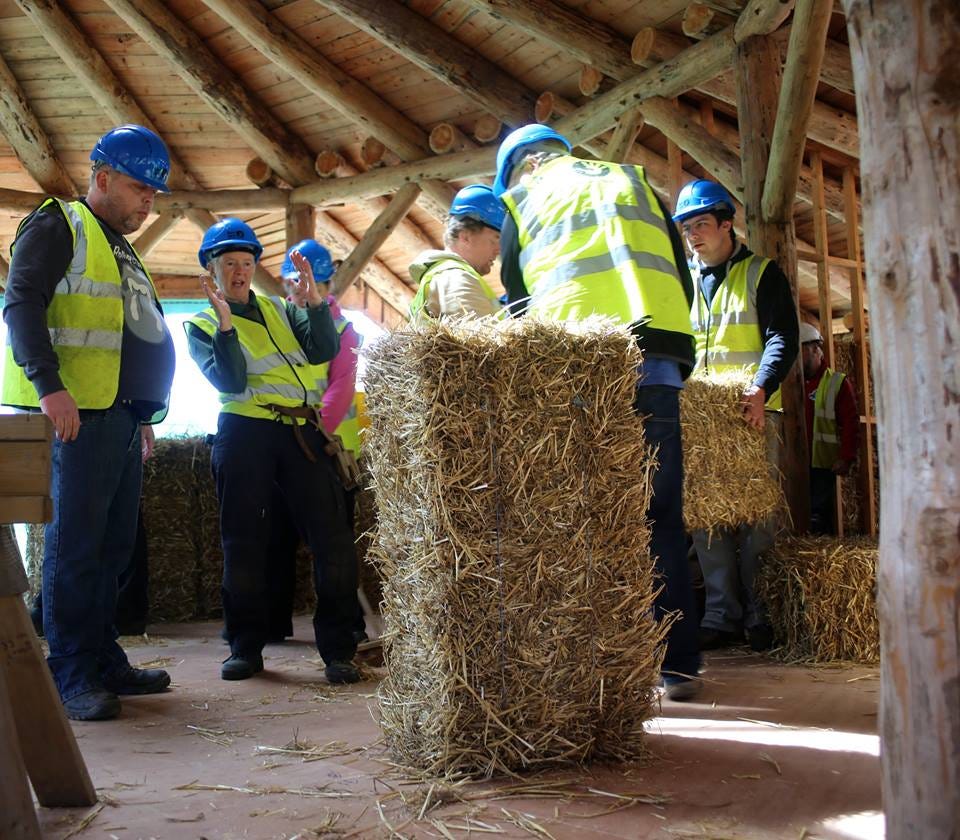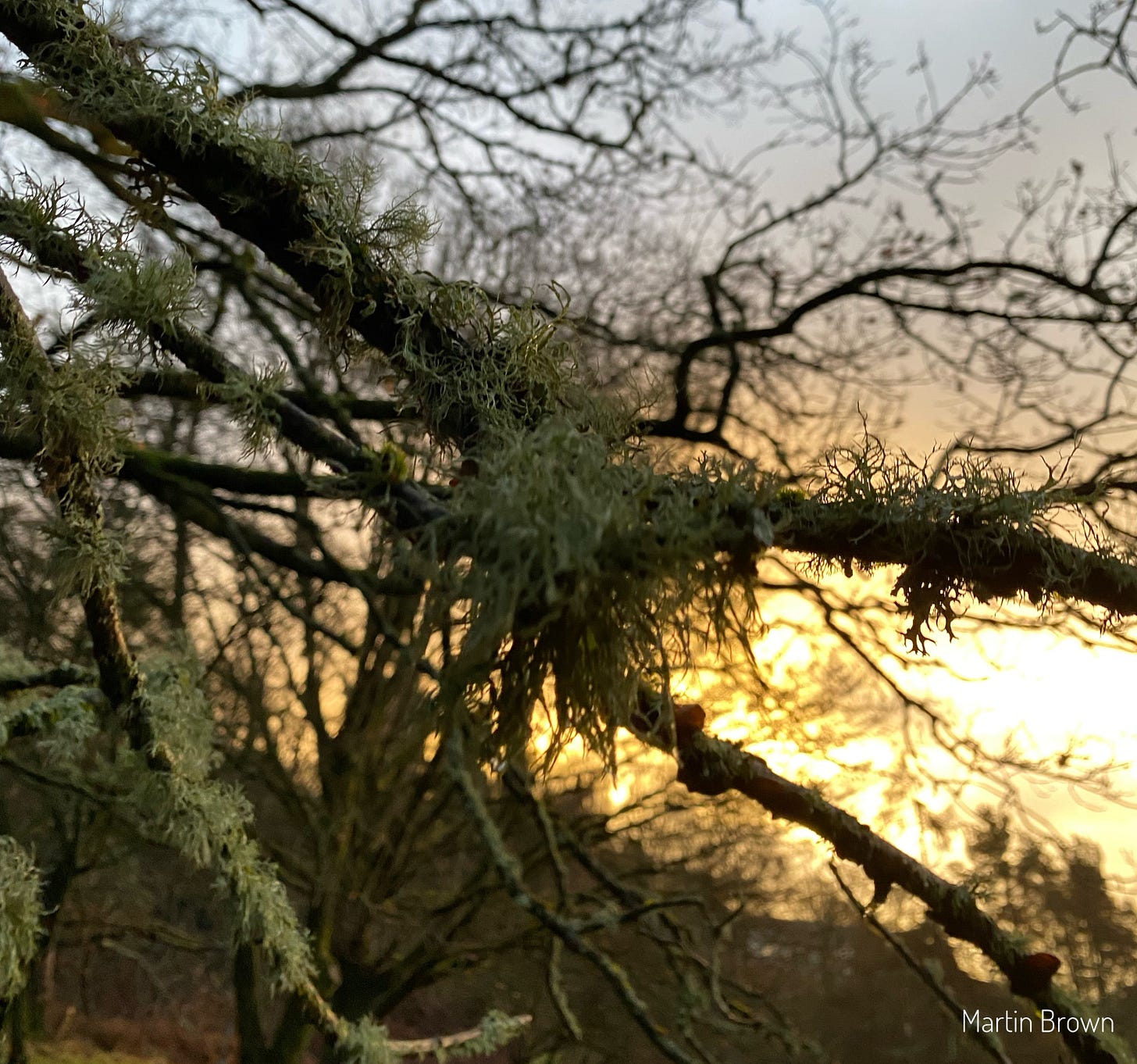Gie me ae spark o' Nature's fire ...
Living nature-positive buildings as rainforests and terrariums embracing biogenic materials and biophilic thinking.
Welcome to Regen Notes, exploring regenerative spaces …1
Nature Positive
Through 2023 Zoom Regenerative will explore being nature-positive and what this means for us in the built environment and related sectors. From COP15, nature-positive is set to be a defining element of a responsible, sustainable and regenerative futures.
We kick off this series on the 24th of January with Nuria Munoz on being nature-positive, sharing insights from her journey in well-being interior design, biophilia, biophilic design and the Living Future Europe recently launched Biophilic Society.
Nature-Positive?
Nature positive can be seen as the mindset that fully recognises the value and importance of nature in our lives. It promotes a deep respect for the natural world and encourages individuals to engage with nature in a positive and constructive way, as part of nature, not apart from. This can take many forms, such as spending time outdoors, protecting natural habitats, and supporting conservation efforts. The goal of nature positive is to create a deeper connection with the natural world and to help preserve it for future generations. This deeper connection, one that recognises the connectivity instinctively was labelled Eutierria by Glenn Albrecht, essentially to be in the flow, mindful of being part of nature.
Natures Social Union.
Gie me ae spark o' Nature's fire,
That's a' the learning I desire.
Through sessions introducing biophilia I also introduced quotes and work from the likes of John Muir, William Wordsworth, Robert Burns, Also Leopold and Robin Wall Kimmerer amongst others, illustrating the established recognition of how nature connectivity is intrinsinctly linked to our wellbeing.
Biophilia and biophilic design being later defined by Erich Fromm, E O Wilson, Stephen Kellert and the work from Terrapin BrightGreen founded on our innate relationship with nature
Nature-positive thinking, as an explicit trend and movement, is a more recent phenomenon, but its roots can be traced back to the 19th century environmental literature and movement. Environmentalism as a movement emerged in the 19th century, and it was influenced by the works of writers such as Muir, Emerson, Wordsworth and others, who wrote about the importance of nature and its role in our lives. They strongly believed that nature has the ability to bring people together and create a sense of community, that it can provide spiritual and emotional nourishment for people, and enable a better stewardship of our natural environments
The works of these writers helped to establish the idea that nature is not just a resource to be exploited, but also a source of inspiration, beauty, and spiritual fulfillment. They advocated for the preservation of natural areas and the protection of wilderness, which helped lay the foundation for the modern environmental movement.
The nature-positive trend, as we know it, is an evolution of this thinking, it goes beyond the protection of nature, it also emphasizes the benefits of nature for people, and the importance of connecting with nature for our well-being. It’s a holistic approach that tries to find a balance between human well-being and the preservation of the planet.
A gift, as part of the Icelandic Jólabókaflóðið custom we now hold here at home on Yule Eve, was Lakeland Wild by Jim Crumley who takes a chapter to trace the evolution of natures social union thinking, (ie nature-positive). From Scotland and the English Lake District to America and back. A chain of literary giants who influenced their successors over the centuries, from Robert Burns 1759-1796, to Wordsworth 1770-1850, to Ralph Waldo Emerson 1803-1882, to Henry David Thoreau 1817-1862, to Walt Whitman 1819- 1892, to John Muir 1830-1914, to Aldo Leopold 1887-1948, to which I would add Rachel Carson 1907-1964. All of whom in turn are influencing our thinking.
Interesting in Lakeland Wild, Crumley includes Alfred Wainwright (1907-1981) who’s pictorial guides are Lake District go to classics and wrote this lovely prose …
In due course, I came to live with sight of the hills and am well content. If I could not be climbing, I was happy to sit idly and dream of them, serenely. Then came a restlessness and the feeling that it was not enough to take their great gifts, and to do nothing in return. I must dedicate something of myself, the best part of me to them. I started to write about them and draw pictures of them. Doing these things I found I was still giving and still receiving.
This thread of environmental writing is however very much western and male - and doesn’t address the influence of the indigenous voice and writers, wisdom that is only now being acknowledged and recognised. Primarily through the work of Robin Wall Kimmerer and the stories articulated through the wonderful writings and podcasts from Emergence Magazine.
To take only what we need and use everything we take. Robin Wall Kimmerer Honourable Harvest
Indigenous peoples have a long history of environmental wisdom and thinking that has been passed down through generations. (through story telling rather than through the works of literature) This wisdom is based on a deep understanding of the natural world and the interconnectedness of all living things. Indigenous peoples have traditionally used this wisdom to sustainably manage their natural resources and maintain a balance between human needs and the needs of the environment.
Yet the question then who is our current literary environmental influencer? Rebecca Solnit, Robin Wall Kimmerer, Robert Macfarlane all spring to mind.
Shifting Supply
Material manufacture, specification and procurement is shifting. Increasingly it is at the heart of decisions that affect a buildings impact on carbon, on health, on nature, along with the responsibility image of the client and project team.
As mentioned before on Regen/Notes, regenerative approaches to design construction and management necessitates a far deeper material exploration, the asking of different questions, and working with supply chains to co-create buildings that enable all life to thrive.
The ILFI Red List, Declare and Living Product Challenge all help set the direction here.
Just after Christmas architizer.com posted a great article that listed seven materials that have gained momentum this past year and are likely to dominate the architectural lexicon in 2023. Six of the seven are biogenic.
Hempcrete - a low carbon concrete alternative? Hemp itself has great regenerative properties, for example in improving soils during its growing phase and working with another sector in a shift to regenerative agriculture.
Hemp News, illustrating growing hemp demand - Scots firm IndiNature which makes insulation out of hemp has secured a £2m investment to speed up its growth. BBC 09 Jan 2023
Bamboo - significantly contributing to to a more ecologically responsible built environment.
Graphene - durable, it is highly conductive, has light-absorbing qualities and antibacterial.
Microalgae - enabling possibilities from static structures to living ecosystems, incorporating microalgae into building façades as a means of creating renewable energy and purifying the air.
Insect-Infested Timber - materials that were once unsuitable for building can now be transformed into viable materials
Mycelium - possibilities of incorporating the material in natural veneers, floor tiles and sculptures.
Straw - insulating properties with a positive ecological footprint. Straw is durable and biodegradable and often locally sourced.
Goodbye to Forever Chemicals?
We are seeing the reduction and removal of forever chemicals from manufacturer 3M. Forever chemicals (PFAS) are used in variety of construction, interiors and household materials. It is hoped that 3M’s commitment to remove PFAS from their products sets a strong message for other manufacturers, and that the gap in supply is not met by others. In the meanwhile PFAS (which are on the ILFI Redlist) should not be used in responsible buildings - whether they be regenerative, healthy, living or just simply sustainable.
As a recent Green Science Policy Report highlights “While PFAS serve desirable functions such as weatherproofing, corrosion prevention, and stain resistance, their utility comes at a cost to health and the environment. The report details typical use of PFAS in buildings from the foundations to the rook, to services and internal finishes.
Through construction stage consultation I recommend PFAS’s are treated as COSHH2 substances with appropriate measures in place if an alternative cannot be found. And encouraging to see contractors now taking this approach.
Supply Chains
So, with an increase in biogenic materials and a decrease in harmful, processed chemical based materials our material palette is changing and will no doubt change many existing supply chains. Now is the opportunity for finding the time and space for deeper material management and supply chain development and co-creation.
In Practice?
An example of where nature positive and biogenic materials are coming together is the stunning Reggio school in Madrid. Rainforest? Turn left after the drawbridge! Inside Madrid’s eye-popping living school. (Guardian)
Rainwater is designed to run down the facade, following the clefts in the cork, nourishing whatever microbial lifeforms take hold. Other schools might reach for the pressure-washer, but this one will embrace the grime. “I hope it will become like the surface of a tree,” says Jaque, “full of life.”
And, this Madrid project is not alone in taking nature as project inspiration, for example the brilliant new Futures Institute at Dollar Academy in Scotland with ambitions to be a Living Building Challenge project, incorporating many nature based solutions - check out their webpages here. I look forward to sharing more on this project in due course.
… more driftwood
Stephen Kellert Biophilia Awards
The Stephen R. Kellert Biophilic Design Award acknowledges Stephen’s legacy as a pioneer in articulating and applying biophilic design principles to the built environment. His advocacy has encouraged widespread adoption of the practice of design for human-nature connection.
The award is in recognition of achievements in the built environment, including buildings, interiors, and communities, which demonstrate the principles and benefits of biophilic design.
Living Future Europe is collaborating with the International Living Future Institute Biophilic Cities Living Future Institute of Australia in 2023 to offer an Australia, Europe, and City category award in addition to the main award.
Biophilic Society Summit
Watch out for details on this - online in June 2023
COP15 Explainer
Halting and reversing biodiversity loss by 2030 is the equivalent of 1.5C – and has the ability & power to inspire & unite the whole of society. Carbon Brief COP15 : Explainer: Can the world ‘halt and reverse’ biodiversity loss by 2030? Jan 16th 2023
Control of Substances Hazardous to Health









